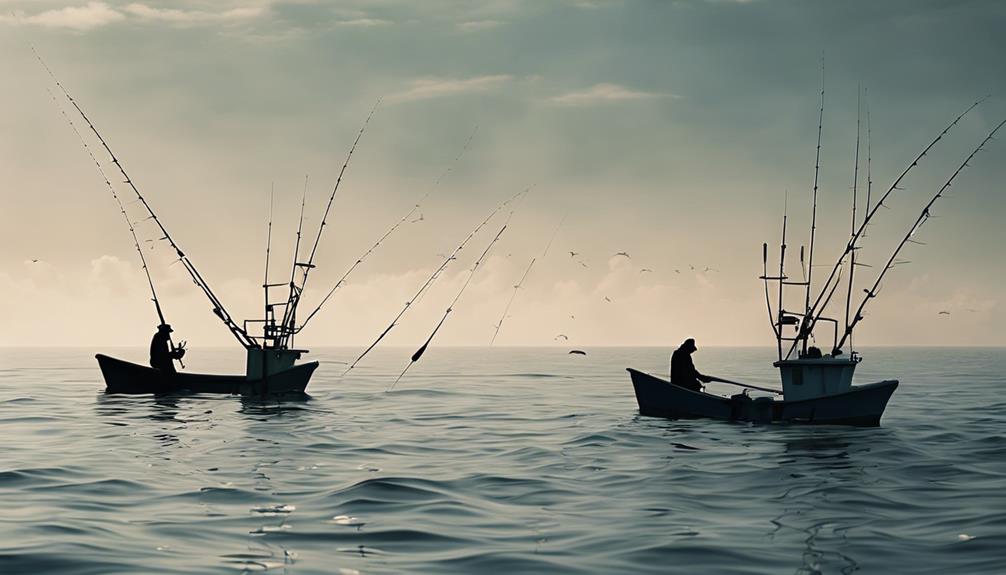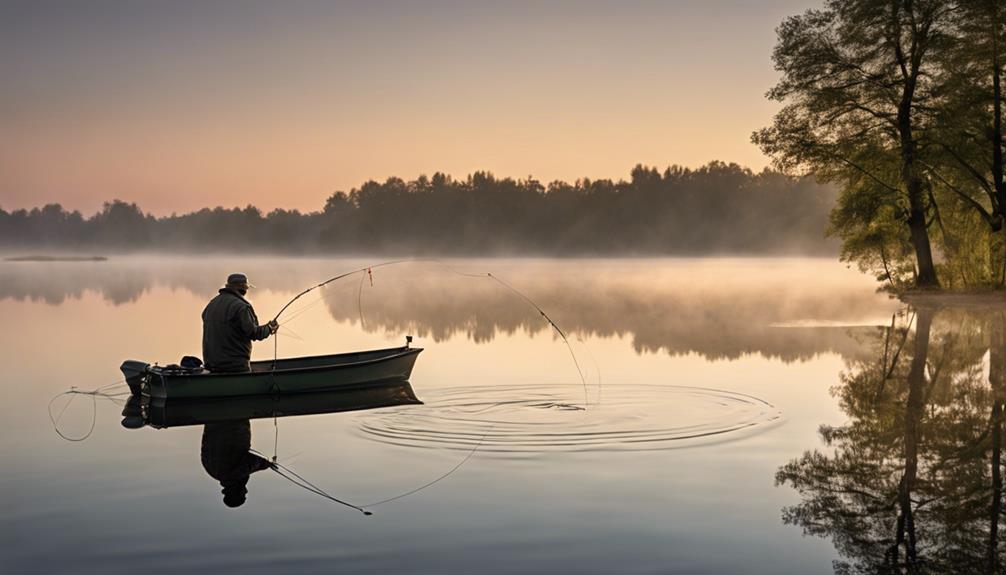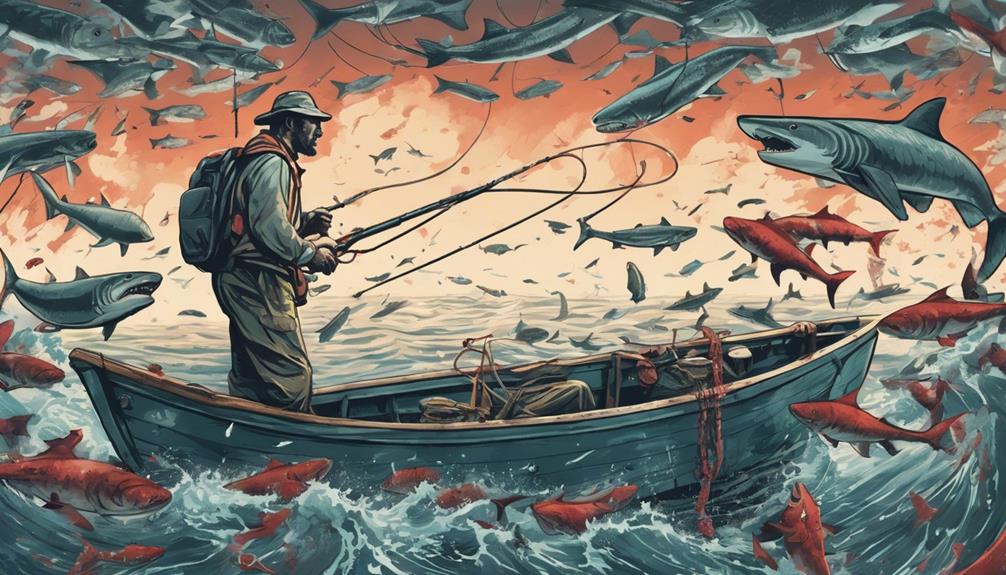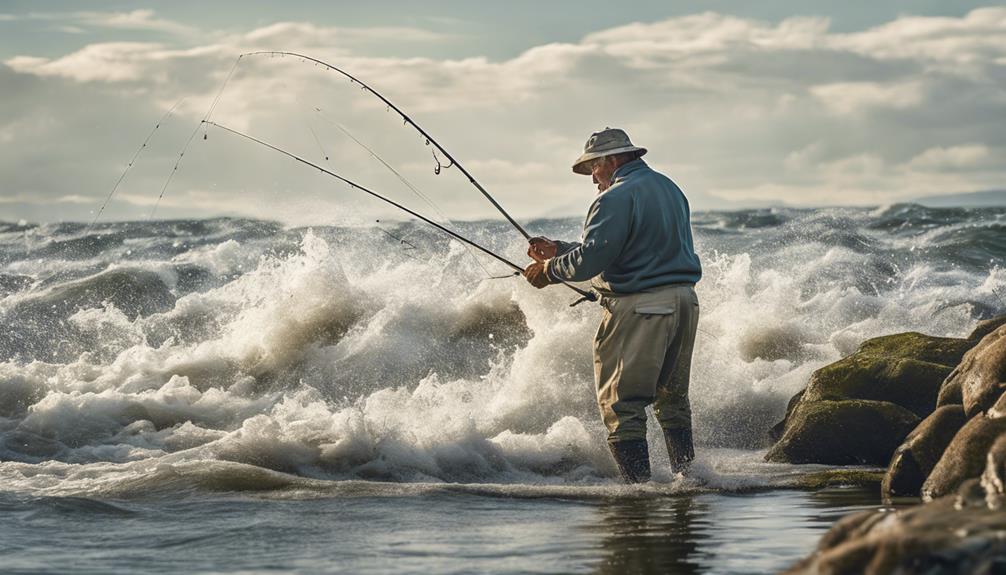When it comes to deep sea fishing, experienced anglers swear by the technique of using live bait such as squid to attract larger game fish like marlin or tuna.
However, the success of your fishing trip doesn't solely rely on bait choice. Understanding the intricate dance between technique and patience is key to reeling in the big ones.
The secret lies in a combination of skill, strategy, and a little bit of luck. So, how can you increase your chances of landing the catch of a lifetime in the vast depths of the ocean?
Targeting the Right Locations
When aiming to catch the best fish while deep-sea fishing, it's crucial to pinpoint the right locations for a successful outing. Choosing the right bait is essential for attracting the specific type of fish you're targeting. Different fish species have varying preferences when it comes to food, so selecting the appropriate bait can significantly increase your chances of a successful catch. Researching the common diet of the fish in the area you'll be fishing in can help you determine the best bait to use.
Exploring underwater topography is another key aspect of targeting the right locations for deep-sea fishing. Understanding the layout of the seabed can provide valuable insights into where fish are likely to congregate. Look for underwater structures such as reefs, drop-offs, or ledges, as these areas often attract a diverse range of fish species. Additionally, underwater currents play a crucial role in determining the movement patterns of fish, so identifying areas where different currents meet can be particularly fruitful.
Understanding Bait and Lures
To maximize your success in deep-sea fishing, understanding the right bait and lures to use is essential for attracting your targeted fish species effectively. When it comes to bait selection, it's crucial to consider the specific saltwater species you're aiming to catch. Saltwater fish have different preferences compared to freshwater species, so using the right bait can significantly increase your chances of a successful catch. Researching the feeding habits of the fish you're targeting will help you choose the most suitable bait.
In addition to bait selection, mastering lure presentation is key in deep-sea fishing. Lures are designed to mimic the movement of prey, enticing fish to strike. Understanding how to properly present your lure can make a significant difference in attracting fish. Different species have varying responses to lure movement, so it's essential to adapt your technique based on the behavior of the fish you're targeting.
While many freshwater techniques can be adapted for deep-sea fishing, it's important to note the differences in environment and target species. Experimenting with various bait and lure combinations will help you determine what works best in different deep-sea fishing scenarios. Remember, the more you understand about bait selection and lure presentation, the more successful you'll be in landing your desired catch.
Mastering Deep Sea Reeling
Master your technique for deep sea reeling by maintaining a steady and controlled rhythm while handling the fishing rod. To ensure smooth reeling, start by paying attention to reel maintenance. A well-maintained reel will operate smoothly, allowing you to focus on your technique rather than struggling with equipment issues. Keep your reel clean and well-lubricated to prevent any hiccups while reeling in your catch.
When it comes to casting techniques, practice makes perfect. Work on your casting accuracy to ensure that your line lands where you want it to be. A precise cast can make all the difference when deep sea fishing, increasing your chances of hooking a big catch. Additionally, mastering line tension is crucial. Keep the tension on your line consistent to prevent it from going slack and potentially losing your fish.
Rod control is another essential aspect of deep sea reeling. Hold your fishing rod firmly but comfortably, maintaining a good grip to handle any sudden movements from your catch. By controlling your rod effectively, you can guide the fish towards you with greater ease.
Navigating Tides and Currents
Navigating tides and currents requires a keen understanding of how these natural forces influence your deep sea fishing experience. To maximize your chances of a successful fishing trip, pay close attention to tide predictions and current charts. These tools provide valuable insights into the movement of water, helping you determine the best times and locations to fish. By aligning your fishing schedule with the ebb and flow of the tides, you can increase your chances of encountering active feeding grounds where fish are more likely to gather.
Moon phases play a crucial role in influencing tides, affecting the intensity and timing of currents. During full and new moon phases, you can expect higher high tides and lower low tides, leading to stronger currents. On the other hand, during quarter moons, the tidal range is smaller, resulting in weaker currents. By considering these lunar patterns in conjunction with tide predictions, you can better anticipate the underwater dynamics that will impact your fishing expedition.
Weather conditions also play a significant role in how tides and currents behave. Strong winds can amplify currents, making it challenging to maintain your position or control the drift of your bait. Before heading out to sea, check the weather forecast to prepare for any potential changes in wind speed or direction that could affect your fishing plans. By staying informed and adaptable, you can navigate tides and currents with confidence, optimizing your deep sea fishing experience.
Utilizing Fish Finders
When deep sea fishing, utilizing fish finders can significantly enhance your ability to locate and target fish effectively. Fish finders use sonar technology to detect underwater objects, including schools of fish, by sending out sound waves and analyzing the echoes that bounce back. This allows you to see where the fish are located beneath the surface, giving you a competitive edge in finding the best fishing spots.
In addition to sonar technology, many modern fish finders come equipped with GPS tracking capabilities. GPS tracking allows you to mark productive fishing locations, create waypoints, and navigate back to specific spots with ease. By combining sonar technology with GPS tracking, you can't only locate fish but also keep track of the most fruitful areas for future fishing trips.
When using a fish finder, pay attention to the display screen to interpret the information accurately. Look for arches or fish symbols on the screen, indicating the presence of fish. Different fish finders may have varying features and settings, so familiarize yourself with your specific model to make the most of its capabilities.
Learning Proper Knot Tying
Proper knot tying is essential for deep sea fishing success. To ensure you're well-equipped for your next fishing expedition, mastering the art of knot tying is crucial. Here are some tips to help you improve your skills:
- Rope Handling: Before delving into the specifics of knot tying, it's important to understand how to handle a rope correctly. Practice sessions focusing on coiling, uncoiling, and general rope management will make a significant difference in your overall efficiency when tying knots.
- Knot Tying Techniques Tutorial: Familiarize yourself with a range of essential knots used in deep sea fishing, such as the Palomar knot, improved clinch knot, and loop knot. Seek out online tutorials or attend a workshop to learn the intricacies of each knot and when it's best utilized.
- Consistent Practice: Like any skill, practice makes perfect when it comes to knot tying. Set aside time before your fishing trips to practice tying knots repeatedly. Muscle memory plays a significant role in the effectiveness of your knots, so consistent practice is key.
- Real-World Application: Don't wait until you're out on the water to test your knot tying abilities. Practice tying knots in various conditions, such as windy or wet environments, to simulate real-world fishing scenarios and ensure you can tie secure knots when it matters most.
Managing Fishing Equipment
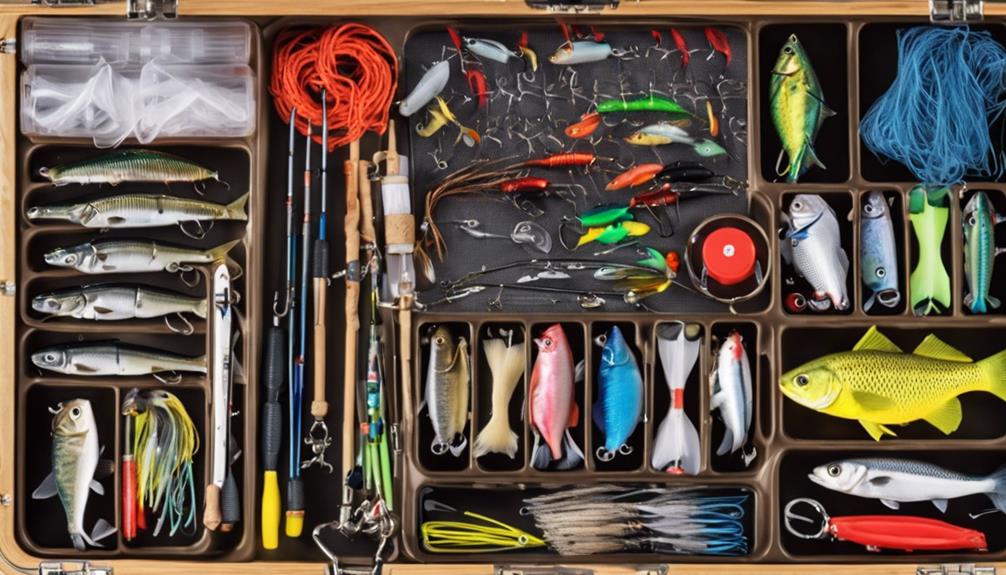
Ensure your fishing equipment is properly organized and maintained to optimize your deep sea fishing experience. Proper equipment maintenance is essential for ensuring your gear functions correctly when out on the water. Before heading out, check all your equipment for any signs of wear and tear. Replace any damaged items and make sure your reels are properly lubricated for smooth operation.
Effective storage solutions are key to keeping your fishing equipment in top condition. Invest in a tackle box or bag to keep all your gear organized and easily accessible. Storing your equipment properly not only extends its lifespan but also saves you time when locating specific items while out at sea.
When it comes to gear organization, arrange your tackle based on the type of fishing you plan to do. Sort your lures, hooks, weights, and other tackle by category to streamline your fishing process. Additionally, consider the specific species you're targeting and adjust your tackle selection accordingly. Having the right gear for the job can significantly increase your chances of a successful deep sea fishing trip.
Safety Tips for Deep Sea Fishing
Looking to enhance your deep sea fishing experience with added safety measures? Deep sea fishing can be an exhilarating adventure, but it's essential to prioritize safety. Here are some crucial safety tips to keep in mind:
- Emergency Preparedness: Before heading out, ensure you have a well-stocked first aid kit on board. Familiarize yourself with its contents and know how to use them in case of emergencies. Additionally, have emergency contact numbers readily available in case help is needed.
- Weather Awareness: Stay informed about weather conditions and forecasts for the area where you'll be fishing. Sudden changes in weather can pose significant risks, so it's crucial to be aware of any upcoming changes. Consider investing in a reliable weather radio or app to stay updated while out at sea.
- Proper Safety Gear: Always wear a properly fitting life jacket when deep sea fishing. Even experienced swimmers should wear one as a safety precaution. Additionally, consider investing in other safety gear such as a personal locator beacon for added peace of mind in case of emergencies.
- Boat Maintenance: Regularly inspect your boat for any signs of wear and tear. Ensure that all safety equipment, such as fire extinguishers and flares, are up to date and in good working condition. Taking care of your vessel can prevent accidents and ensure a safer fishing trip.
Frequently Asked Questions
How Can I Prepare Mentally and Physically for a Long Day of Deep Sea Fishing?
To get ready for a long day of deep sea fishing, mentally prepare by staying focused on the goal of landing that big catch.
Boost your physical stamina and endurance by eating a hearty breakfast, staying hydrated, and doing some light stretches to warm up.
Remember to pace yourself throughout the day and take breaks when needed to keep your energy up and stay sharp on the water.
Are There Any Specific Regulations or Permits Required for Deep Sea Fishing in Certain Locations?
When heading out for deep sea fishing, always check the permit requirements and fishing regulations for your location.
Make sure you're following the rules to protect the marine environment and support sustainability practices.
By being aware of any specific regulations or permits needed, you can enjoy your fishing trip responsibly while minimizing your environmental impact.
What Are Some Common Mistakes That Beginner Deep Sea Fishermen Make and How Can They Be Avoided?
When you're just starting with deep sea fishing, it's common to make mistakes like not checking the weather or underestimating the equipment needed. To avoid these mishaps, always monitor the weather forecast, ensure you have the right gear, and pay attention to safety guidelines.
Another mistake isn't being patient; remember, fishing takes time, so relax and enjoy the experience.
Lastly, avoid overcrowded spots to increase your chances of a successful catch.
How Can I Properly Store and Preserve the Fish I Catch While Out at Sea?
When out at sea, proper fish storage and preservation are crucial. Ensure you handle the fish carefully to maintain quality.
Use suitable containers to transport them safely. Consider sustainability practices and ethical considerations when storing your catch.
Are There Any Specific Conservation Practices That I Should Be Aware of While Deep Sea Fishing to Protect the Marine Environment?
When deep sea fishing, it's crucial to follow specific conservation practices to protect the marine ecosystem.
Engage in sustainable fishing methods and practice responsible angling.
Avoid overfishing, respect catch limits, and release undersized or protected species.
Use circle hooks to reduce harm to fish and always properly dispose of any trash or fishing gear.
Conclusion
So, next time you head out for some deep sea fishing, remember to target the right locations, use the right bait and lures, master your reeling technique, navigate tides and currents, utilize fish finders, practice proper knot tying, and manage your equipment.
And most importantly, prioritize safety at all times. With these techniques in mind, you'll be sure to have a successful and enjoyable deep sea fishing experience.
Happy fishing!
